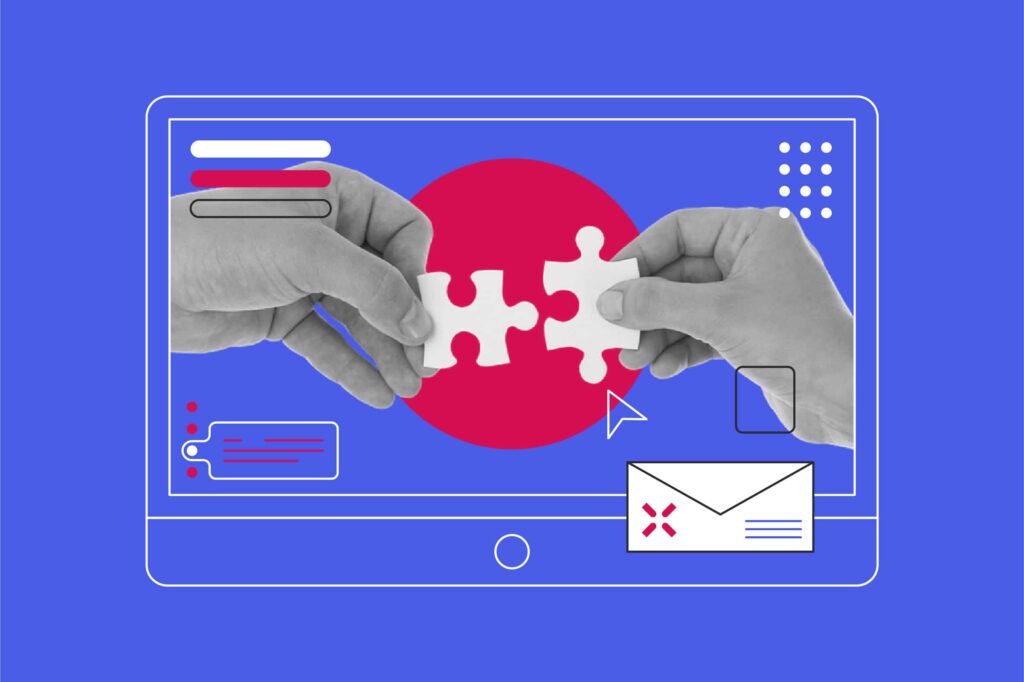There’s a classic bar joke that goes:
“A fast-food chain and cell phone carrier walk into a bar…”
Okay, I reimagined the specifics of the joke — but the pairing of the two “bargoers” is real and reflective of the dynamic alliances that are part of so many marketing strategies.
But co-branding isn’t a new phenomenon. In fact, many of our favorite products are the result of two brands banding together. When I was a kid, Betty Crocker’s partnership with Hershey fueled my countless sugar rushes. Nike’s infamous union with Michael Jordan still produces coveted sneakers.
When done correctly, co-branded products are brilliant. The marriage of two brands brings together respective audiences and fans for a product experience that wouldn’t exist without collaboration. This strategy has become even more present as competitive markets of similar products and services require brands to get creative for the attention of their consumers.
The key to successful co-branding is to make the partnership beneficial for both parties. Both partners need to gain something from the collaboration and add value to the other. There are a ton of examples of co-branding partnerships that work, and to show you what makes them successful, we’ve curated the list below.
Doritos and Taco Bell
- Well-known chip with a loyal following
- Coveted chip texture that lends well to tacos
- Associated with snacking, game time, and social gatherings
- Unique flavors
- Restaurant distribution
- Credibility in fast-food and Mexican-inspired food industries
- Proven success in product innovation
Taco Bell’s commitment to product innovation is industry-leading, and their collaboration with Doritos is a testament to that. In 2014, the Mexican fast-food chain partnered with Frito Lay to create the Doritos Locos Taco, a taste experience that merged the worlds of both of their customer bases.
As described by Taco Bell, the taco combined their classic filling with the “same crunch, the same texture, the same seasoning on your fingers as a Doritos chip.” In just three years, 1 billion DLTs sold, proving the item’s strategic brilliance.
In several aspects, the innovation made sense. A crunchy, nacho-flavored chip is an ideal substitute for a taco shell. Doritos and Taco Bell also shared the same consumer – young people with an affinity for cheap, flavorful junk food.
Rihanna and Puma
- Status as a genuine high fashion and streetwear influencer
- Dedicated fanbase
- Prominence in the music industry
- Cultural capital
- Global sports brand
- A roster of high profile celebrities
- Success in the athleisure market
Puma cemented their position as leaders in the athleisure industry when they named Rihanna creative director of their women’s collection in 2014. At the time, the German multinational sportswear manufacturer was in the middle of a rebrand and tapping into the lucrative market for female leisure gear.
Pulling in Rihanna was an obvious choice. The grammy-winning mega-star has long been regarded as a fashion icon, with a roster of successful collaborations and a loyal fanbase documenting (and imitating) her style choices. When the Fenty Puma Creeper released in 2015, the universal appeal to both men and women, along with Rihanna’s influence, boosted Puma’s sales tremendously — earning the prestigious “Shoe of the Year” award.
Puma wasn’t the only one to reap benefits as part of this partnership, though. While not Rihanna’s first collaboration, the Fenty Puma collection promised a global platform for the star and placed her among the ranks of Puma’s other successful collaborators, such as Usain Bolt and Alexander McQueen.
Rick & Morty and Pringles
What Rick & Morty brings to the table:
- Niche cartoon community with an army of fans
- Instant recognizability among millennials
- Pop culture phenomenon
What Pringles brings to the table:
- SuperBowl Ad placement
- History of limited-edition chip flavor success
- Prominence in the snack industry
Naturally, the Rick and Morty Pringles was a collaboration that caught our eye. In early February, the snack brand and award-winning animated series rolled out a pickle-flavored crisp, named after the show’s character Pickle Rick. The limited-edition flavor was accompanied by a 30-second Super Bowl placement and the promise of a longstanding partnership.
To those unfamiliar with the two brands, the union may have seemed odd. Still, Rick and Morty is no stranger to surprising product placements. In 2017, fans of the show pleaded for a return of McDonald’s “Szechuan Sauce” after an April Fool’s Day episode featured several references to the condiment. The demand became so strong that McDonald’s re-released the sauce, which was originally on the market in 1998.
With the February 2020 release of Pickle Rick-themed crisps, Pringles is slated to enjoy the same success, according to Jill King, Adult Swim’s Vice President of Marketing and Partnerships.
“Rick and Morty fans are going to be given amazing new opportunities to illustrate their love for this iconic show, thanks to Pringles.”
Starbucks and Spotify
What Starbucks Brings to the table:
- 10 million users of My Starbucks Rewards program
- More than 7,000 national locations
- Music-driven ambiance
What Spotify Brings to the table:
- Expansive discography
- Opportunity to engage customers through playlists
- A customer base of 60 million users
When Starbucks joined forces with streaming service Spotify in 2015, they highlighted the relationship between music and the food and beverage industry. The global beverage brand had long used music to create an ambiance around its coffee. They previously offered free music download cards in-store and curating daily playlists for their customers.
To further improve the customer experience, Starbucks and Spotify built a “music ecosystem.” It incorporated Spotify’s streaming platform into Starbucks’ popular mobile loyalty program, My Starbucks Rewards. The initiative encouraged customers to be active users of both services, allowing the creation of in-store playlists and the option to continue listening to them even after they’ve left the location.
The mutual benefit was obvious. The platform gave Starbucks a way to interact with their customers, even when they weren’t enjoying a coffee, and encouraged customers to adopt Spotify as their streaming service of choice. Through perks, like free beverages for Spotify purchases, the two brands became intertwined with both themselves and their customer’s lifestyles.
Taco Bell and T-Mobile
What Taco Bell brings to the table:
- Devoted army of fans intensely loyal to the chain
- History of a successful brand and product collaborations
- Clever, popular advertising campaigns
- Taco Bell “lifestyle”
What T-Mobile brings to the table:
- A customer base of 86 million
- Driving customer behavior for Taco Bell
- Publicity
As earlier documented on this list, Taco Bell is devoted to satisfying their intensely loyal customer base through product innovations and engagement. Beyond Doritos Locos Tacos, the fast-food chain has opened the doors of a taco-themed hotel and welcomed fans to a pop-up restaurant inspired by Demolition Man. One of our favorite initiatives, however, was their partnership with wireless carrier T-Mobile.
During the 2019 Super Bowl Sunday, T-Mobile announced that they would be giving out free Taco Bell every Tuesday as part of their T-Mobile Tuesdays app program. No purchase was necessary — all customers had to do to score their soft or crunchy taco was open the T-Mobile Tuesdays app, claim the free taco, and order online at tacobell.com.
The response was wildly successful. According to T-Mobile CEO John Legere, the partnership brought “Taco Bell its highest online order day ever and T-Mobile Tuesdays was No.1 in the App Store.”
And the partnership didn’t stop there. The following July, the duo teamed up to open crossover stores called “T-MoBell.” The stores gave away free food, branded swag, and a limited edition T-Mobell Freeze slushie. Fans that couldn’t attend were encouraged to engage via social media through retweet-to-win contests.
Again, the collaboration garnered a positive response, with over 12,000 taco-enthusiasts attending the pop-ups and proving the marketing genius behind free food and mobile devices.
Final Thoughts
When it comes to co-branding, there are several factors to consider. Brand relevance, fit, resources, equity, and benefits are all-important for ensuring a successful collaboration.
Before adding partnerships to your marketing strategy, be sure to analyze your own brand, as well as that of your partner’s. If you feel the partnership checks all of the necessary boxes, strike a deal. And if you need assistance bringing together your collaboration visually, Design Pickle is more than happy to help. Check out our handy Graphic Design Cost Calculator to find out how much you can save on co-branded designs with our unlimited, flat-rate service.






